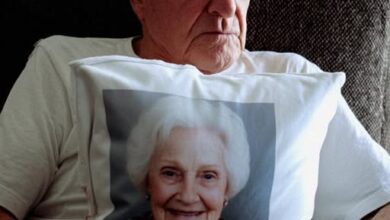
This woman was found a moment ago without a cab!
Local authorities in Phnom Penh, Cambodia, were alerted to a troubling discovery late in the morning near Keng Road and Win Win Boulevard in Sangkat Bak Kheng, Khan Chroy Changvar. A woman, estimated to be around thirty years old and still unidentified, was found lying in a vacant lot. Witnesses described her as visibly weak, disoriented, and in fragile condition. Despite her state, she remained conscious when officials arrived, a detail that gave responders a measure of relief in what could have been an even more tragic scene.
The timeline of her ordeal paints a disturbing picture. A local passerby had first noticed her around 5:30 a.m. but initially assumed she was resting or perhaps waiting for someone. Hours later, when he realized she had not moved, he returned and contacted authorities. By then, the sun had risen high, and she had endured several hours of exposure and neglect before help arrived. Emergency responders reached her shortly after 11:00 a.m. and transported her to the Prek Phon Health Center for immediate evaluation.
Medical staff at the center reported that she appeared emaciated, dehydrated, and physically depleted. Her frail condition suggested she may have recently been discharged from a hospital or had been struggling with prolonged illness. The absence of personal identification only deepened the mystery, leaving officials and health workers with more questions than answers. Was she abandoned? Lost? Or had she slipped through the cracks of a healthcare system unable to provide follow-up support?
This incident, while seemingly isolated, reflects broader issues that extend far beyond Phnom Penh. Across urban centers in Southeast Asia—and indeed globally—stories like this reveal the challenges of addressing vulnerability in environments that move too quickly to notice those in need. Modern cities, filled with development, noise, and constant motion, often lack the compassion necessary to recognize the silent suffering of individuals who cannot advocate for themselves.
Experts in public health and urban sociology have long warned of this very dynamic. Vulnerable populations—those recovering from illness, the unhoused, or individuals stranded without support—face heightened risks of neglect. When a person is left exposed in a public area for hours without intervention, it demonstrates more than an individual crisis. It highlights the collective blind spot of a society preoccupied with its own pace. The woman’s ordeal is not just about one life temporarily overlooked; it is a mirror held up to the city itself.
The World Health Organization has emphasized the importance of social determinants of health—factors beyond medical treatment that shape outcomes for individuals and communities. Access to shelter, community networks, and basic human compassion all play a role in survival and recovery. Yet, in cases like this, the absence of these determinants becomes glaring. A single passerby eventually intervened, but the fact that she remained unnoticed by countless others for hours underscores the fragility of urban compassion.
Community attentiveness, though often undervalued, is a vital lifeline. A simple check-in, a call for help, or even the willingness to stop and ask a question can be the difference between life and death. This incident reminds us that not every emergency wears the obvious mask of flashing sirens or chaos. Sometimes it looks like a lone figure lying silently in a vacant lot, waiting for someone to care enough to notice.
Phnom Penh, like many other rapidly growing cities, faces the dual challenge of modernization and social responsibility. Infrastructure and economic growth dominate headlines, but stories like this reveal another side—the quieter crisis of urban isolation. Without systems designed to identify and support the vulnerable, individuals can slip into dangerous invisibility. The woman found on Keng Road may survive this ordeal thanks to eventual intervention, but how many others remain unseen?
As she receives care at the Prek Phon Health Center, her story lingers as a call to action. The city cannot afford to treat such cases as isolated incidents. Local officials, healthcare providers, and community members must recognize the importance of building a safety net that extends beyond institutions. Compassion is not just a private virtue; it must be embedded in the structure of the city itself.
The lesson here is both simple and profound: life in urban environments should not mean life unseen. Every individual, whether known or anonymous, carries a dignity that deserves acknowledgment. This woman’s suffering revealed not only her own vulnerability but also the urgent need for greater attentiveness in our shared spaces.
Her fate may ultimately rest in the hands of those now caring for her, but the responsibility belongs to all of us. Each passerby, each neighbor, each official, holds the power to notice and act. And when we fail to see, we risk allowing our cities to become places where silence and neglect overshadow compassion and humanity.




